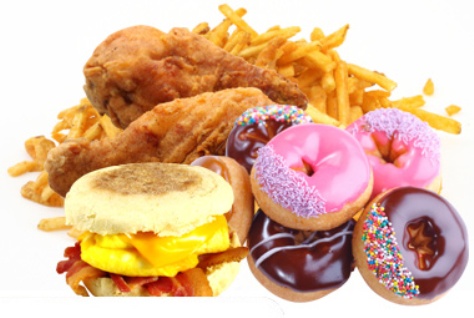
A previous post covered ways that sugar can increase fat consumption. One way is that fat makes sugary foods taste sweeter. That may mean a sugar/fat combination tastes preferable to a sugar-only food, such as hard candy.
Clients have told me that, when they eliminate sugar from their diets, they can actually enjoy snacking on a brown rice cake topped with a slice of tomato or sprouts.
When they”™ve been eating sugary foods, though, such a snack seems unappealing and unpalatable. At those sugar-laden times, they find themselves wanting different things: bologna or salami sandwiches, for example, or other heavy foods.
Those heavier foods have more fat in them than the first snack, so the clients are consuming extra fat — even though they weren”™t necessarily seeking high-fat foods in the first place.
In my dissertation, I named this “secondary fat consumption.”
Secondary fat consumption can occur in several different ways:[private PRO-Platinum|PRO-Monthly|PRO-Gratis|PRO-Seasonal|Platinum-trial|Monthly-trial|PRO-Military|30-Days-of-PRO|90 Day PRO|Stages-Instructor|Schwinn-Instructor|PRO-Studio|28 Day Challenge]
- We eat more of a fatty food (like peanut butter) when we have sugar (jelly) to eat with it and make it taste better.
- We eat sugar, which triggers endorphins, as explained above. That shifts our preferences to other foods that trigger endorphins — to more sugar or to high-fat foods, or both.
- We crave something sweet and want the sweetest taste we can get — so we instinctively choose a sugar/fat combination, instead of, say, a hard candy with sugar only.
Unfortunately, that”™s not the worst of it. High-fat foods we eat trigger the hormone ghrelin. To me, it always seemed like a Monster Hormone.
For one thing, ghrelin slows metabolism. Who wants that?
At the same time, ghrelin stimulates the part of the brain that increases appetite (the lateral hypothalamus). That gives “secondary fat” a chance to increase calories — not only through the secondary fat calories themselves, but also through all the other foods we might suddenly want to eat simply because that secondary fat has triggered ghrelin and our appetite.
It”™s obvious that there”™s potential for a self-perpetuating cycle in this, and that it can toboggan its way down a slippery slope and pick up speed.
It also seems obvious that — bottom line — sugar is the culprit in this metabolic mess.
Avoiding sugar is one important factor in transforming your health, increasing your energy, and feeling great. Heart disease, the #1 cause of death in the U.S., has been linked with inflammation. So have diabetes, hypertension, cancer, and more.
Inflammation is strongly affected by nutrition, and sugar”™s effect on insulin and hormones makes it a strong contributor to inflammation. Dare I advise, yet again, not to eat it?[/private]
- New Year’s Resolutions: A Sugar Addict’s Survival Guide - April 15, 2024
- Motivation vs. Enthusiasm - October 12, 2023
- Why Exercise Shouldn’t Be Just One Thing - November 9, 2022
